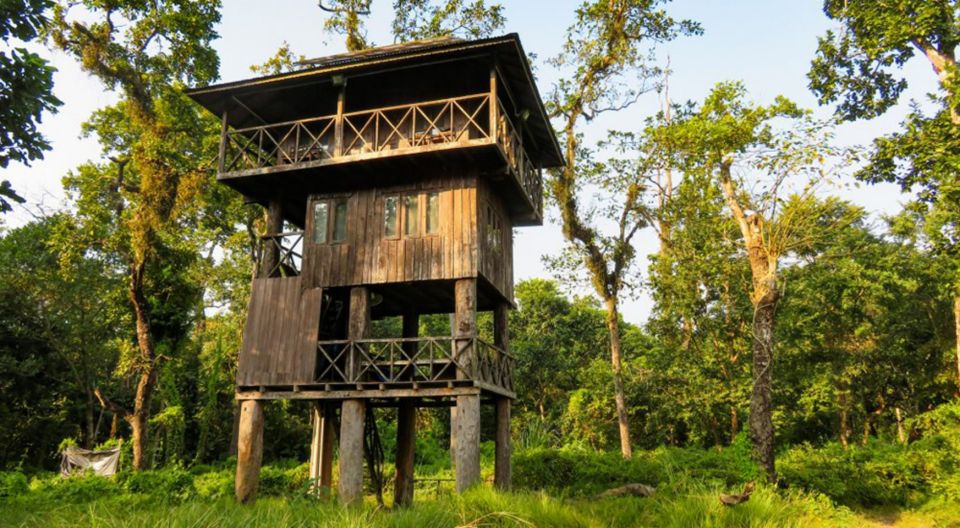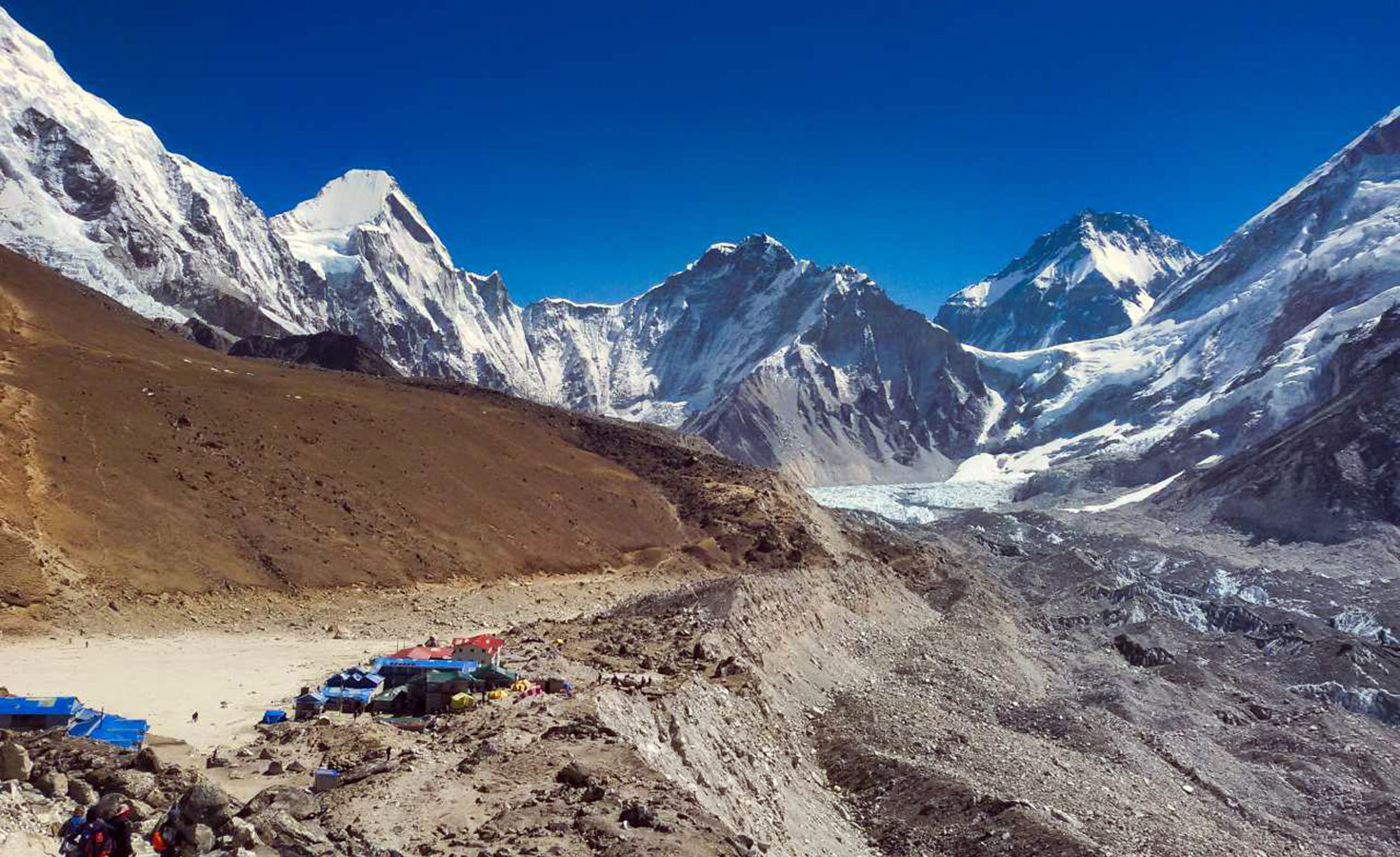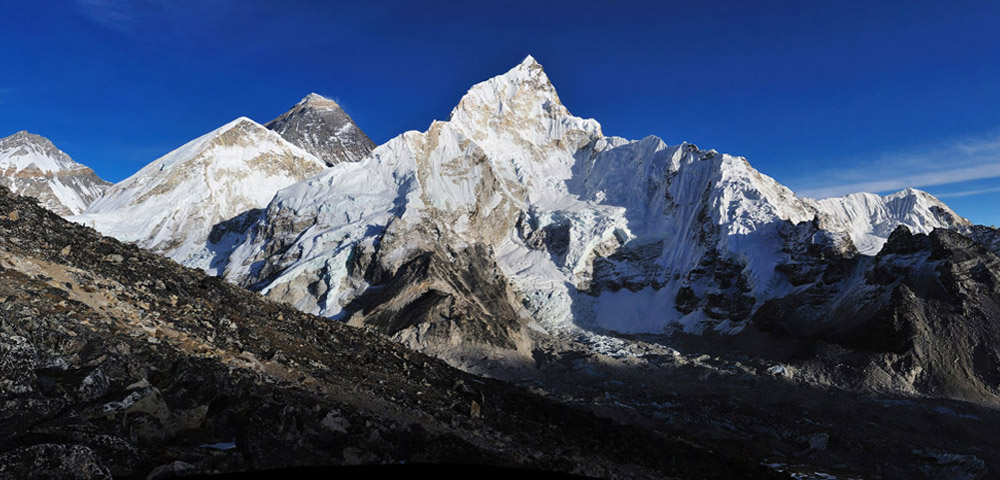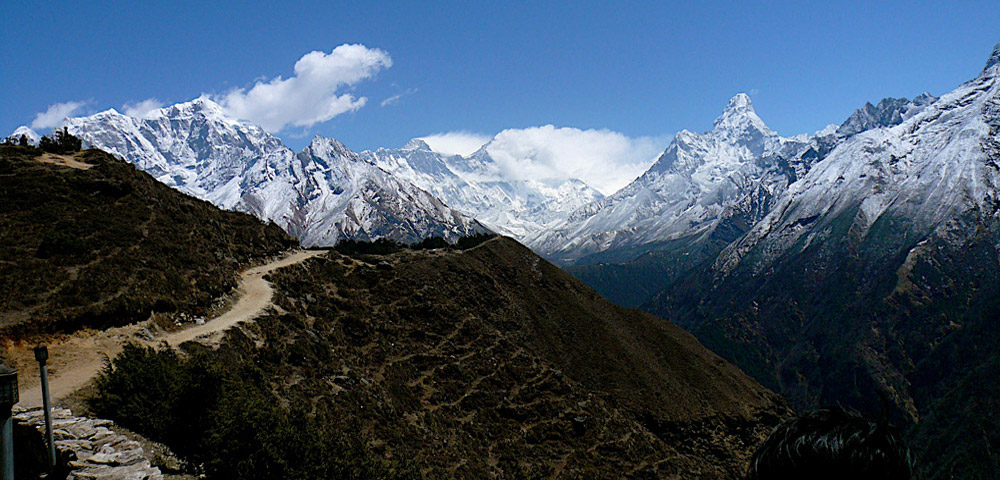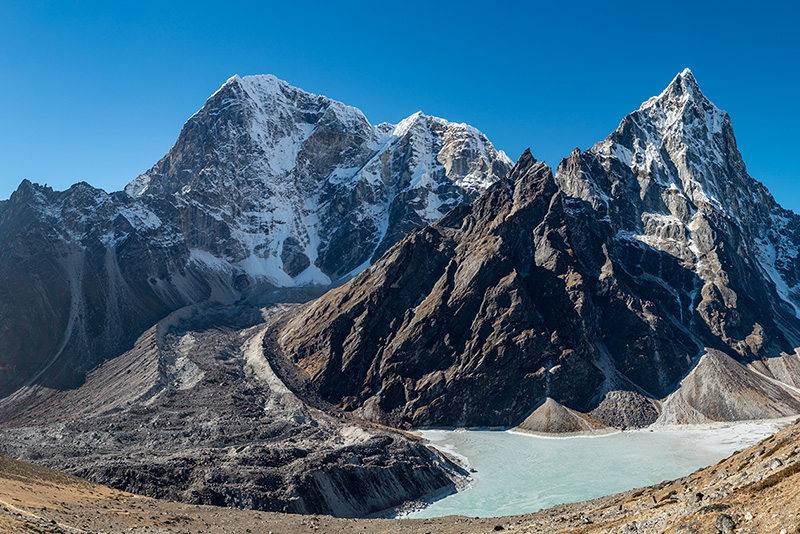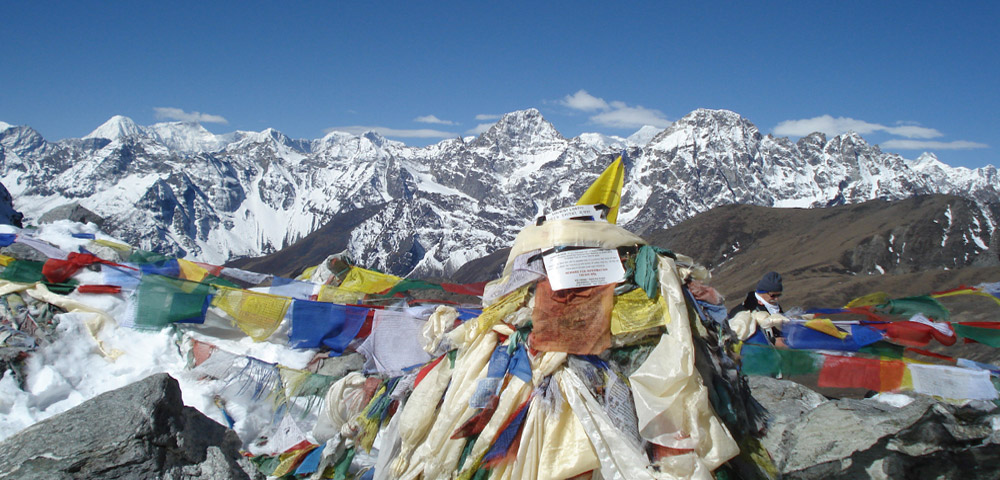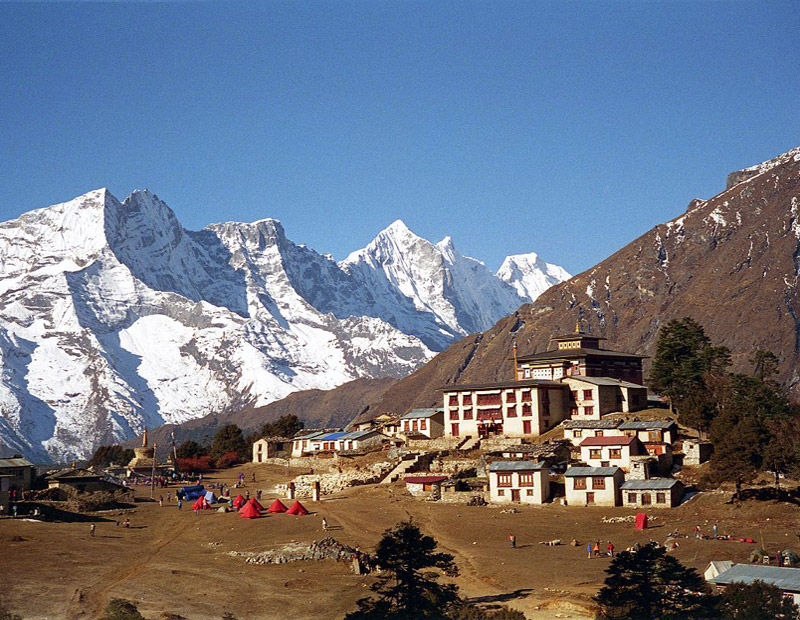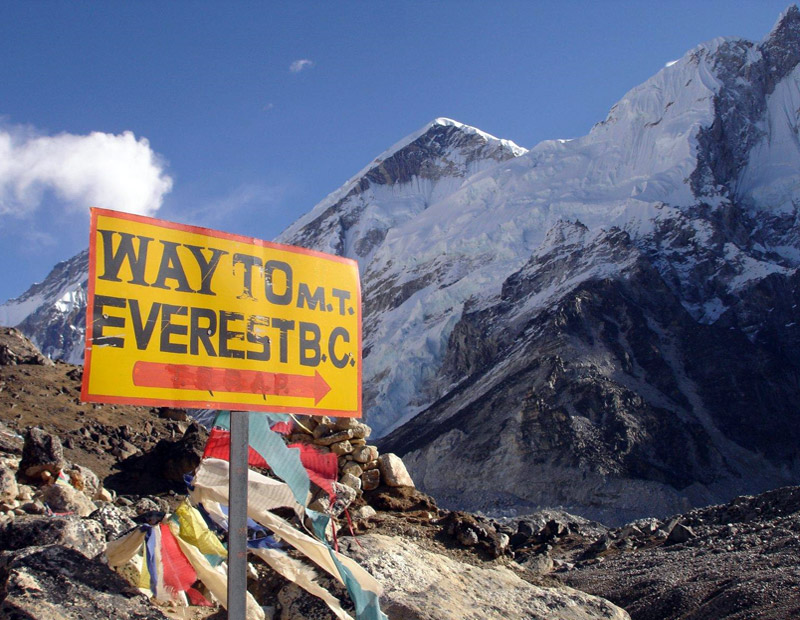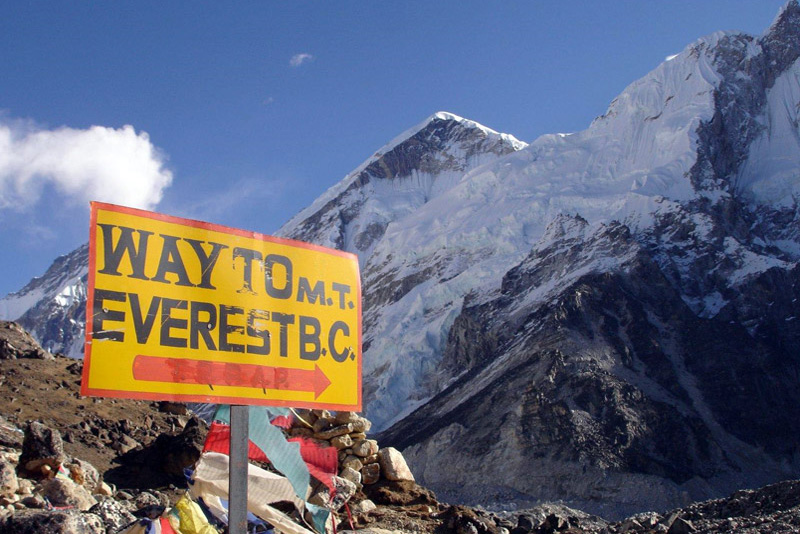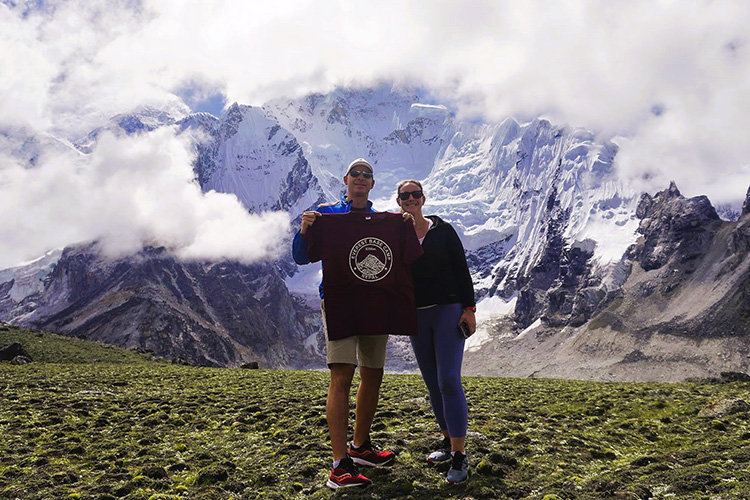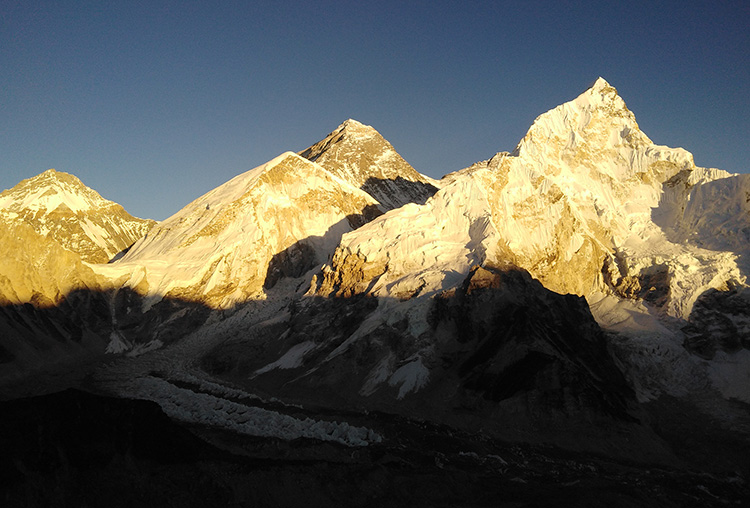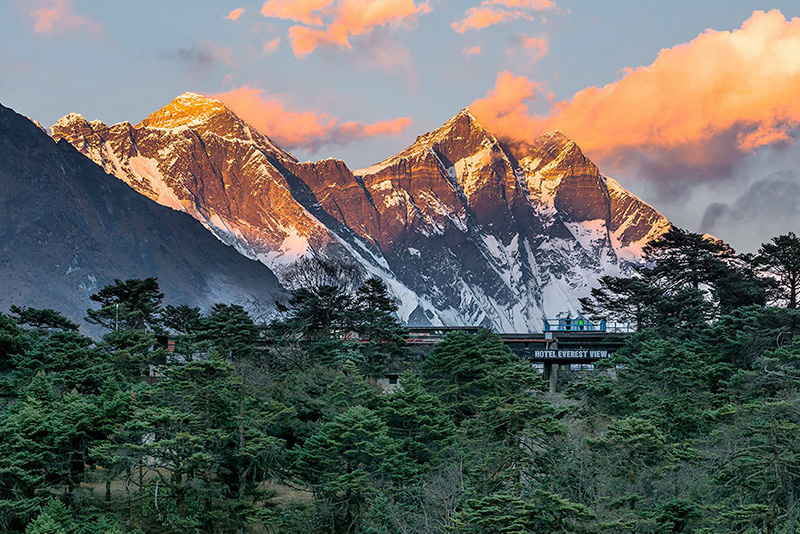Classic Everest Base Camp Trek
Classic Everest Basecamp Trek was used by Sir Edmund Hillary and Tenzing Norgay Sherpa to conquer Mount Everest in 1953. In this journey, our first stop is Jiri, a hamlet that resembles the Swiss city of Zurich and serves as the entrance to Sagarmatha National Park. From here, we begin our trek. On our route to Lukla’s mountain airstrip, we travel through the picturesque Solu alpine region. From Lukla, we proceed along with and among the region’s renowned natives, the famed Sherpas. On the road to our target, Kalla Pattar and Everest Base Camp, we passed past Sherpa villages and monasteries. From Kala Patthar, there are magnificent views of Everest, Nuptse, and Lhotse.
Classic Everest Base Camp Trek offers the chance to explore the landscape of the entire Everest region, including a verdant forest with rare wildlife and verdant valleys with a breathtaking view of the world’s tallest mountains, including Everest, Lhotse, Nuptse, Amadablam, and Pumori.
Classic Everest Base Camp Trek Highlights
The Classic Everest Base Camp Trek is one of the most iconic and popular trekking routes in the world. It offers a captivating blend of natural beauty, cultural experiences, and a sense of adventure. Here are some highlights of the classic Everest Base Camp Trek.
Breathtaking Scenery: The trek offers unparalleled views of some of the world’s highest peaks, including Mount Everest (8,848 meters/29,029 feet), Lhotse, Nuptse, Ama Dablam, and many more. The panoramic vistas are a treat for mountain enthusiasts and photographers.
Cultural Immersion: Along the trail, you’ll pass through charming Sherpa villages, monasteries, and prayer flags. This provides a unique opportunity to interact with the local Sherpa people, learn about their traditions, and witness their Buddhist way of life.
Namche Bazaar: The bustling town of Namche Bazaar is a major trading hub and a crucial acclimatization point. It’s a great place to explore local markets, enjoy stunning views, and acclimatize to the higher altitude.
Tengboche Monastery: This iconic Buddhist monastery, with the backdrop of Everest and Ama Dablam, offers a serene setting for trekkers to experience spirituality and culture. You might also have the chance to witness a traditional Buddhist ceremony.
Everest Base Camp: Reaching Everest Base Camp itself is a significant achievement. Standing at the base of the world’s highest mountain is an awe-inspiring experience that many trekkers cherish.
Kala Patthar: A popular side trip from Gorak Shep, Kala Patthar (5,545 meters/18,192 feet) offers one of the most stunning panoramic views of Mount Everest and the surrounding peaks.
Diverse Landscapes: The trail takes you through various landscapes, from lush forests and valleys to high-altitude barren terrains. The diversity of terrain keeps the trek interesting and dynamic.
Sherpa Culture and Hospitality: Interacting with the Sherpa people and staying in teahouses along the route provides a glimpse into their warm hospitality and resilient way of life.
Challenging Adventure: The trek presents a physical and mental challenge, making it ideal for adventure seekers. The gradual increase in altitude requires proper acclimatization and physical preparation.
Sunrise Views: Witnessing sunrise over the Himalayas, especially from viewpoints like Kala Patthar, is a magical experience that leaves an indelible memory.
Sagarmatha National Park: The trek takes you through the Sagarmatha National Park, a UNESCO World Heritage Site, known for its diverse ecosystems, including rare wildlife and vegetation.
The Best time for Classic Everest Basecamp Trek
The best time for this Trek in Nepal is during the pre-monsoon (spring) and post-monsoon (autumn) seasons. These months offer the most favorable weather and trekking conditions for a safe and enjoyable experience. Here’s a breakdown of these two main trekking seasons.
Spring (Pre-Monsoon): March to May
Spring is one of the most popular times for the Everest Base Camp Trek. The weather is relatively stable, with clear skies, mild temperatures, and blooming rhododendron forests in lower elevations. The views of the Himalayan peaks are usually excellent during this season. The temperatures gradually warm up as you move into May, making it a comfortable time for trekking.
Autumn (Post-Monsoon): September to November
Autumn is another prime trekking season in Nepal and is considered the best time for the Everest Base Camp Trek. The weather is clear, with dry conditions and excellent visibility of the mountains. The temperatures are moderate, neither too hot nor too cold, making it comfortable for trekking. The autumn months provide stunning views of the landscapes, and the colorful foliage adds to the scenic beauty.
During these seasons, the trail conditions are generally at their best, and the weather is favorable for trekking. The months of December to February are the winter season and can be extremely cold at higher elevations, with limited trekking activity. The monsoon season from June to August brings heavy rainfall and cloudy skies, making trekking more challenging due to muddy trails and reduced mountain visibility.
Meet our representative at the airport who will transfer you to the Hotel. Hotel checking-in and go for sightseeing tour. Overnight in Kathmandu.
After breakfast process for the UNISCO Heritage Sightseeing tour. Visit Swyambhunath Temple, Kathmandu Durbar Square, Patan city, Khokana Village and after sight-seeing tour, transfer you back to hotel. Overnight Kathmandu.
The early morning scenic drive from Kathmandu passes through Araniko Highway to Jiri (1,905m) – about 187 km north-east of Kathmandu. Jiri is a very beautiful place hence it is also recognized as the Switzerland of Nepal. While in the bus drive, you cross the typical Newari villages of Dhulikhel and Banepa. After crossing these villages you can see the panoramic views of the eastern Himalayas, including Ganesh Himal, Langtang Lirung and Dorjee Lakpa. From Dolalghat, you head north following the Sunkoshi River to Jiri. From Jiri, you continue driving to Bhandar – the upcoming trek start point. Overnight at Bhandar.
This day also you walk uphill and downhill to reach Sete – a small village. Descending the trail from Bhandar through deep forests takes you to the small settlements of Dokharpa and Baranda. Next the trail passes through Surma Khola, Likhu Khola Valley, the small settlement of Kenja and eventually you prepare for steep ascent to Chimbu to reach Sete. Overnight at Sete.
From Sete you gradually ascend to the Lamjura Pass (3,530m) – the highest point between Jiri and Namche Bazar. Enroute pass by the villages of Dagchu and Goyem. The climb of Lamjura Pass rewards with the panoramic view of the surrounding mountains. While enjoying surrounding mountains descend to Junbeshi through the rhododendron, fir pine, magnolia, maple and birch forest. At Junbeshi, you can explore the village and the way of people’s life here. Overnight at Junbesi.
At first cross the Junbeshi Khola and then walk in the ascending slope through the forest. After some hours of climbing you can see the incredible view of the mountains like Everest, Lhotse, Nupte, Makalu, Thamserku, Mera Peak, and many more. This is the first view of Everest on this trip. Next, continue the trail to Salung and descend to Ringmo Khola. Again, cross Trakshindo La Pass and finally descend down to Nunthala through the conifer and rhododendron forests, and terraced fields. Overnight at Nuntala.
This section of the trail is again full of ups and down. At first the trail climbs down to the Dudh Koshi River. Then the trial follows the Dudh Koshi River and makes upward journey to Khumbu. Next the trail climbs to Jubing. From Jubing the trek walks straight and then descends to cross a suspension bridge to lead you to make a final ascent to Bupsa. Overnight at Bupsa.
At first the trail from Bupsa Dada leads you towards Kharte to climb the summit of Khari La Pass. The Pass offers you the magnificent views of Gyachung Kang, Khumbila and many other mountains. Next, the trail descends to Puiyan and again passes through some ups and down to reach at Surke. Overnight at Surke.
This section of the trip is short yet goes through some ups and down. At first the trek climbs toward Chaurikharka and then climbs up to Chhiplung. Eventually, the trail climbs down to lead you towards Phakding. From Phakding, your trekking route connects with usual route to Everest Base Camp from Lukla. Overnight at Phakding.
Walking through a pine forest, the trail leads you along the Dudh Koshi River through many suspension bridges. While on the way you catch wonderful view of the glistening Mt. Thamserku (6618m). Passing through the settlement of Benkar, Chumoa, Monjo, you come to the entrance of Sagarmatha National Park. Next, the trail climbs through the forests and bridges to reach the confluence of the Dudh Koshi and Bhote Koshi rivers. Prior to reaching Namche Bazaar pass through Jorsale Village and while on the trail you will have first sight of giant Mt. Everest. Overnight in Namche.
This will be the proper acclimatization day with some excursion around the landmarks of Namche Bazaar the trading hub of Everest region. In the center of Namche you can visit the mountaineering museum and spend some quality time interacting with the fun-loving Sherpa. Next, you can visit to Sagarmatha National Park headquarter and the Tourist Visitor Centre as well. Beyond the centre of Namche Bazaar, you can hike to the Everest View Hotel, the ideal place to overview some of the outstanding mountains such as Mt. Everest, Ama Dablam, Thamserku, Lhotse etc. Besides, you can walk around the Khumjung valley, Hillary School and climb up to the famous airstrip at Syangboche before returning back to Namche. The flora and fauna found at Namche will be another must see landmark of Everest region. Overnight in Namche.
After breakfast in Namche, the trek begins to Tengboche. The wonderful views of Mt. Everest, Mt. Aba Dablam (6,856m), Lhotse (8,511m), Nuptse (7,896m) and close up view of Mt.Thamserku make you breathless. While crossing wild lives like pheasant, musk deer, herd of Himalayan Thar, the trail gradually leads you to Sansa. Next you travel to Dudh Koshi River and then prepare for a little tough climb to Tengboche. Tengboche is popular for close up views of Ama-Dablam, Nuptse, and Everest and it has a biggest Buddhist Monastery all over in the Khumbu region. Overnight at Tengboche.
On this day, you reach at Dingboche enjoying beautiful scenarios of mountains, landscapes, several Chortens, Mani walls and small villages. While passing through north to Pheriche beneath the towering north face of Mt Ama Dablam (6,856m) you come to Imja Valley enjoying panoramic views of snow capped mountains and varied landscapes. The valley gradually unfolds as you approach the confluence of the Lobuche River. From Lobuche River you trek the steepest climb of the day up to Dingboche. At Dingboche, you will see beautiful array of fields and grazing animals. Overnight at Dingboche.
Today’s trek starts from Dingboche and initially passes through the Khumbu Khola valley. In this section of the trail you will have awesome views of mountains on all sides. On the way to Duglha, you come across Dusa- a yak herder’s place and Phulung Karpo-the camp site of the first successful Everest Expedition in 1953. As you trek on, the majestic view of Mt. Pumori (7,161m) comes into view. Prior to reaching Duglha, you will be greeted with the fantastic views of Mt Cholatse, Mt Thamserku, and several other magnificent peaks including the tip of Mt Nuptse (7,896m). Overnight at Duglha.
From Duglha, today’s trek starts with climbing up the steep terminal moraine of the Khumbu Glacier. While moving ahead you will find the memorials to Scott Fischer and 10 times Everest submitter Babu Chiri Sherpa. As the trail passes down to the Khumbu Glacier, you face several great peaks – Khumbutse, Lingtren, Pumori and Mahalangur Himal. In addition, Mt Nuptse towers to the right as the trail crosses the Khumbu Glacier. Overnight at Lobuche.
The trail to Gorak Shep goes ahead through the lateral moraine of the Khumbu Glacier. While trekking ahead to Gorak Shep you will see the crest of north ridge of Everest along with Mt. Pumori, Mt. Mahalangur, Mt. Lingtern, Mt. Khumbutse, Mt. Nuptse, etc. As you reach Gorak Shep, you will see snow-capped mountains looming all around you including the top of the world – Mt. Everest (8,848m). From Gorak Shep you move towards Everest Base Camp. Upon reaching the base camp of top of the world you will have the views of Nuptse, Khumbuste and Pumori. Mt. Everest is not visible from the base camp. The experience of being at the foothill of world’s highest mountain cannot be expressed in words. Next, trek down to Gorakshep. Overnight at Gorak Shep.
Today’s journey starts early in the morning to get Kalapattar. This is the place from where you can see the wide view of Everest. Your dream will come true here. During the trek to Kala Patthar familiar peaks such as Lingtren, Khumbutse, Changtse tower including Nuptse and Everest. While ascending to Kala Patthar, you can pause to catch several outstanding view points to snap pictures. As you reach the top, gigantic views of mountains and glaciers around you give a sense of heaven including close-up view of Mt. Everest, Amadablam and Pumori. You wander from one mighty massif to another at this junction. It will be a tremendous moment in your life that comes once in a lifetime. After taking photo shots of spectacular mountain massifs you again trek down to Gorak Shep. Overnight at Gorak Shep.
On this day, you trek back to Namche passing through Pangboche and Tengboche. The trail is pleasant with the views of impressive mountains and forests. From Pangboche the trail follows the Dudh Koshi gorge descending rapidly through the pine forests. While on the trial you come across Tengboche Monastery – the largest monastery in the Khumbu region. The journey stops at Kyangjuma (3570 m) for a tranquil lunch. At this place you will have the chance to appreciate the stunning Ama Dablam, Thamserku and Nuptse. Next, the trail to Namche passes through pleasant valleys and pasturelands. Ultimately, you reach in Namche Bazaar. Overnight in Namche Bazaar.
The return journey passes through rhododendron and pine forests enjoying snow covered peaks in the distance. Adding to this you walk through the Sherpa villages’ noticing impressive faith in Buddhism and culture of prayer stones and prayers flags. It will be the day of accomplishment of trekking section of this adventure. Overnight at Lukla.
In the morning, we take the tiny aircraft to flight from Lukla to Kathmandu which is very interesting scenery flight journey on the earth. After arrival in Kathmandu airport we drive you to hotel.
Morning, you will be free. Afternoon we will drop you to the Kathmandu International Airport for the departure flight to home.
- All necessary ground transfers.
- All necessary accommodations as per the itinerary.
- Tea House accommodations during the trek.
- Daily breakfast, lunch and dinner during the trekking.
- All necessary paper works.
- All necessary trekking permits.
- Experienced and First Aid-trained trekking guide.
- Strong, helpful porters.
- Comprehensive medical supplies.
- Trekking map.
- Insurance of all local team.
- Warm clothing and trekking gear for staff.
- Sleeping bag and trip duffle bag.
- Trekking certificate issued by us.
- Welcome and farewell dinner in Kathmandu.
- Nepal Visa fee.
- International flights.
- All meals not mentioned in inclusions.
- Personal expenses not stipulated.
- Optional add-ons.
- Gratuities.
You might also like...
Top Add-on Trips
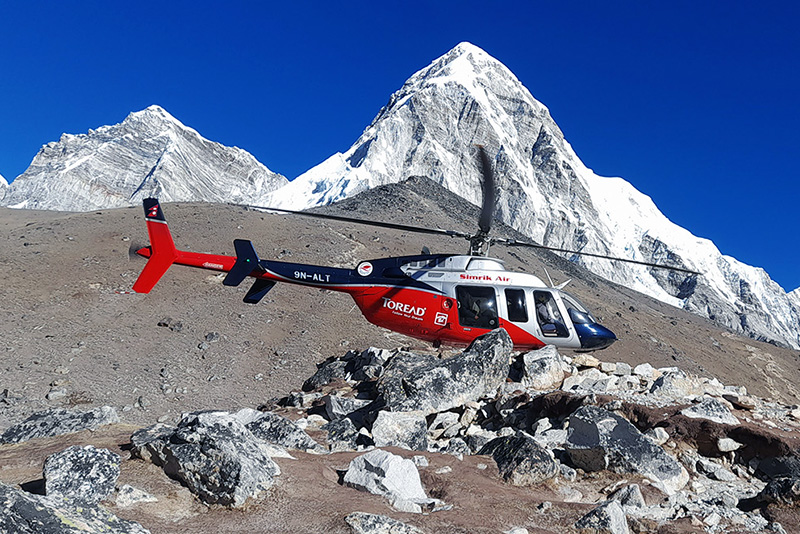
Everest Base Camp Helicopter Tour
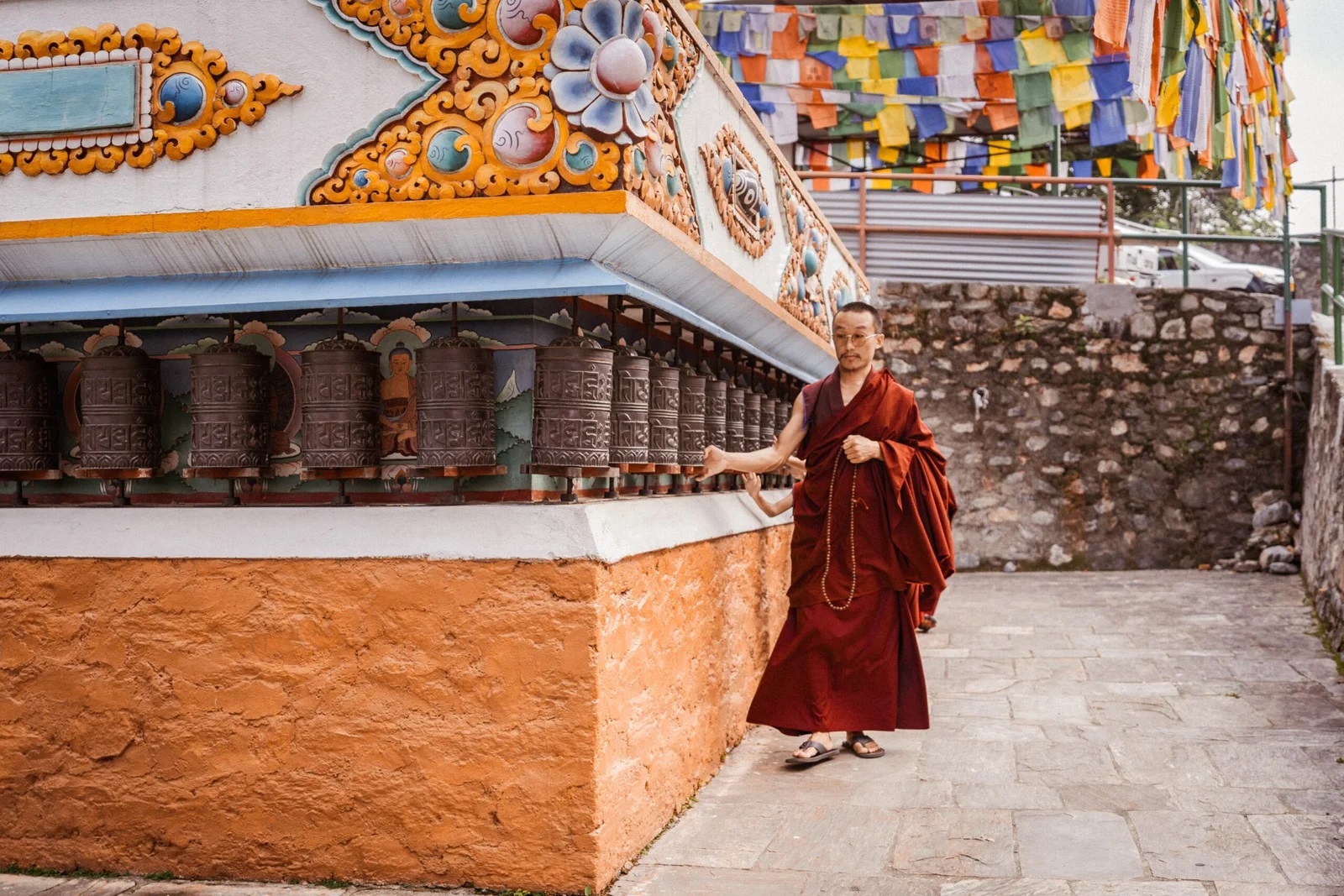
Monastery Stay Tour
